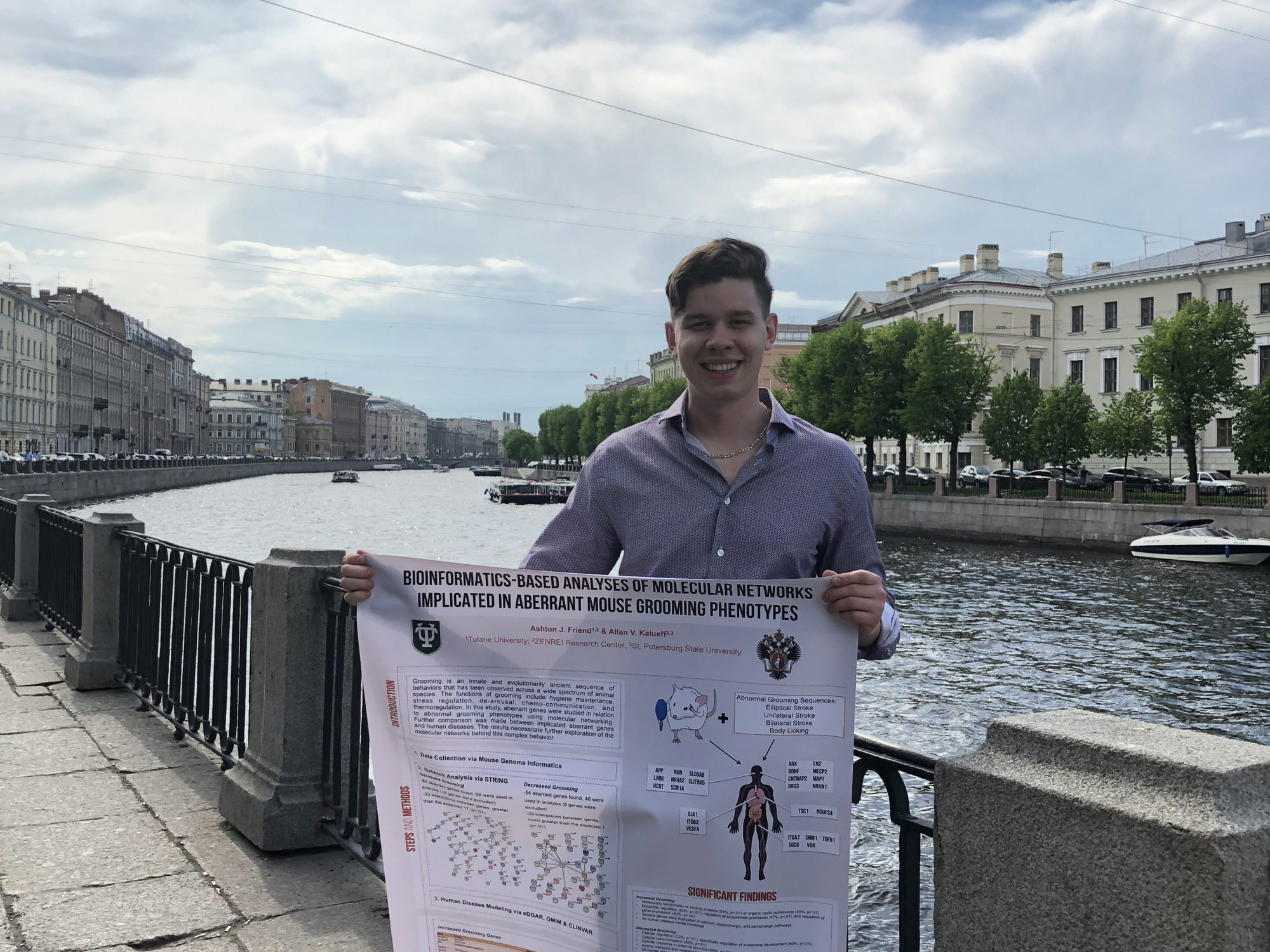I received the Ching Grant this past spring and used the funds for my visa and travel to St. Petersburg, Russia, for the International Stress and Behavior Neuroscience and Biopsychiatry conference. Not only did this grant give me the opportunity to interact with researchers in the field, but it also allowed me to present some research I had been working on at a conference focused on my research interests- stress, behavior, and their intersection with neuroscience.
At the conference, I presented a poster about grooming, a behavior which has important implications in evolution, biology, as well as psychiatry. Grooming is an innate and evolutionarily ancient sequence of behaviors that has been observed across a wide spectrum of animal species (Denmark et al., 2010). Grooming is multifunctional- its benefits span from basic hygiene to stress regulation, de-arousal, chemo-communication, and thermoregulation (Pires, Tufik, & Andersen, 2013; Denmark et al., 2010). Using mus musculus as an animal model, I compiled over 100 aberrant genes related to abnormal grooming phenotypes to explore the molecular networks behind the complex and important behavior. I ran correlational analyses for various biological processes, molecular functions, pathways, and cellular components, as well as took note of the psychiatric implications of the aberrant genes.
I found that the number of interactions was greater than expected, evidencing connectivity and shared systems between genes involved in grooming behavior. Additionally, many genes possessed correlating features, suggesting functional similarities. Select genes exhibited similarities in pathways (i.e. dopaminergic, serotonergic) and specific functions (i.e. cellular response to external stimuli) related to neurological disorders. Furthermore, the high portion of aberrant grooming genes implicated in human disease models suggests importance of abnormal grooming’s role in human disease modeling. These enhanced interactions and shared networks, as well as the observable relationship to psychiatric disorders, necessitates further study of aberrant grooming behavior biomarkers.
Written by Ashton Friend, Ching Grant recipient, 2018

